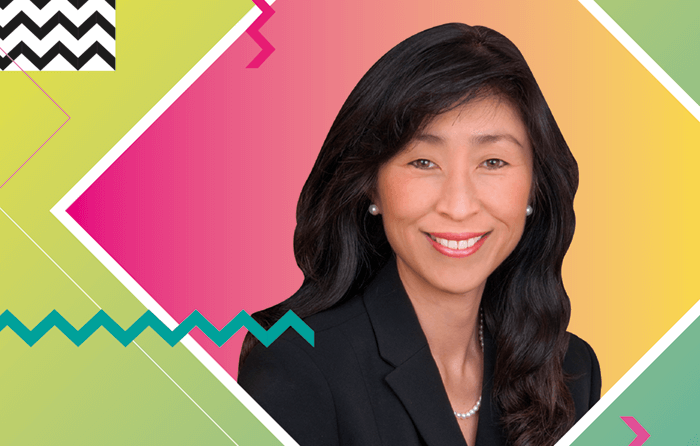
Coming from a family of physicians, it was expected that I’d be a physician too. I’m lucky the hereditary trait of being a doctor was passed down to me. I didn’t realize it when I finished my medical training, but looking back, I’m fortunate the field I selected was perfect for my skill set. My desire to become an ophthalmologist was down to my experience with David Campbell during my ophthalmology elective. He’s a brilliant glaucoma specialist with an insatiable curiosity, but he’s also a kind, ethical, humble person who treated his patients with compassion and his staff with respect.
I know it sounds like a cliché – but my mom. She’s the most hard working, loving, generous person that I know. She was always there when I needed something and always supportive, regardless of the situation. I can’t think of a better inspiration.
Many of the large ophthalmic organizations were led by women; Cynthia Bradford was president of AAO, Emily Chew was president of ARVO, Cynthia Mattox was president of the AGS, Beatrice Cochener was the president-elect of ESCRS, and I served as president of ASCRS. We were able to work together to discuss issues regarding governmental regulations in the US, and we were successful in lobbying to reduce the measures and penalties to the PQRS and Value-Based Modifier Programs, as well as blocking the MedPAC’s recommendation to move physicians towards Advanced Alternative Payment Models.
Thankfully, ophthalmology is one of the more progressive specialties when it comes to gender roles, with many champions for equality. The number of female ophthalmologists continues to grow every year. In fact, when I graduated medical school over 20 years ago, the class was already 50/50 male/female. However, men still dominate surgical subspecialties, which reflects in the 4:1 ratio of male to female practicing ophthalmologists. The challenges that women face in ophthalmology are not unique. They are the same challenges that women face in all industries, and in all fields of medicine.
I’m working on a conference called EnVision Summit. The inaugural event will be held in February 2019 in Puerto Rico, and will focus on empowering women to lead in their field of specialty. Unlike other medical conferences, EnVision Summit fosters a welcoming environment that is open to families. We understand the challenges of advancing in a career while juggling the needs of personal life. This organization offers unique opportunities for new and experienced physicians to discuss issues of clinical importance, develop mentoring opportunities and facilitate collaborations for research. A major theme of this summit is how to conduct clinical research, with a spotlight session led by Malvina Eydelman, the Senior Medical Advisor of the US FDA Ophthalmic Devices Division.
As part of a three-year collaboration with the Outpatient Ophthalmic Surgical Society (OOSS) and others, we created new specialty-specific guidelines for ophthalmic instrument cleaning and sterilization in the US. If the ASCRS hadn’t stepped in, longstanding practices for processing eye instrumentation could have been cited by surveyors as deficiencies that would warrant loss of ASC licensure or coverage. These are the types of challenges that individual physicians cannot combat alone. We need a strong organization, such as the ASCRS, to represent us and voice our unified protest. Being part of something greater than one individual was a rewarding experience.
Technologic advances seem to evolve more rapidly in ophthalmology than other industries. The explosion of IOLs, use of lasers, development of injectable medications for retinal diseases and the surgical innovations in glaucoma are just a handful of the incredible changes that have occurred in the past decade. Hopefully future advances will allow patients to be less dependent on eyedrops for glaucoma, less dependent on corrective spectacles, and medical therapies will decrease visual morbidity from age-related diseases and endocrine disorders. Globally, I hope that the rate of blindness from cataracts will have drastically decreased as more patients have access to affordable cataract surgery.
The focus on presbyopia correction. Not only because of the explosion of new IOLs, but also the new medical developments to prevent lens hardening. This field is in its infancy and will continue to grow over the next few decades.
Remember when your parents told you that you can do anything? They were right. I’ve found that it is possible to do nearly anything. You may never be a professional ball player, but within ophthalmology, people can achieve any goal. It’s important to remember this and strive for the best. Whether that means to become the best clinician, the best educator or the best researcher, it’s all possible with perseverance, hard work and creativity.
